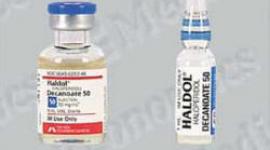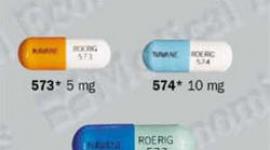Strattera Medication Guide
Important information about Strattera including risk of suicidal thinking in children and teenagers taking Strattera.
Strattera Prescribing Information
Strattera Patient Information
Read this information carefully before you start taking STRATTERA (Stra-TAIR-a) to learn about the benefits and risks of STRATTERA.
Read the information you get with STRATTERA each time you get more STRATTERA, as there may be new information. This information does not take the place of talking to your doctor about your medical condition or treatment.
What is the most important information I should know about STRATTERA?
Parents or guardians need to think about 4 important things when their child or teenager is prescribed STRATTERA:
-
There is a risk of suicidal thinking
-
How to try to prevent suicidal thoughts or actions in your child
-
You should watch for certain signs if your child is taking STRATTERA
-
There are benefits and risks when using STRATTERA
1. There is a Risk of Suicidal Thinking
Children and teenagers sometimes think about suicide, and many report trying to kill themselves.
STRATTERA increased suicidal thinking in some children being treated for ADHD in clinical trials.
A large study combined the results of 12 different studies of children and teenagers with ADHD. In these studies, patients took either a placebo (sugar pill) or STRATTERA for 6 to 18 weeks. No one committed suicide in these studies, but some patients experienced suicidal thinking. On sugar pills, no patients developed suicidal thinking. On STRATTERA, 4 out of every 1000 patients developed suicidal thinking.
For some children and teenagers, the risks of suicidal thinking or behaviors may be especially high.
These include patients with
- Bipolar illness (sometimes called manic-depressive illness)
- A family history of bipolar illness
- A personal or family history of attempting suicide
If any of these are present, make sure you tell your healthcare provider before your child takes STRATTERA.
2. How to Try to Prevent Suicidal Thoughts and Actions
To try to prevent suicidal thoughts and actions in your child, talk with and listen to your child about his or her thoughts and feelings and pay close attention to changes in his or her moods or actions, especially if the changes occur suddenly. Other important people in your child's life can help by paying attention as well (e.g., brothers and sisters, teachers, and other important people). The changes to look out for are listed in Section 3.
Whenever STRATTERA is started or its dose is changed, pay close attention to your child.
After starting STRATTERA, your child should generally see his or her healthcare provider:
- Once a week for the first 4 weeks
- Every 2 weeks for the next 4 weeks
- After taking STRATTERA for 12 weeks
- After 12 weeks, follow your healthcare provider's advice about how often to come back
- More often if problems or questions arise (see Section 3)
You should call your child's healthcare provider between visits if needed.
3. You Should Watch for Certain Signs If Your Child is Taking STRATTERA
Contact your child's healthcare provider right away if your child exhibits any of the following signs for the first time, or if they seem worse, or worry you, your child, or your child's teacher:
- Thoughts about suicide or dying
- Attempts to commit suicide
- New or worse depression
- New or worse anxiety
- Feeling very agitated or restless
- Panic attacks
- Difficulty sleeping (insomnia)
- New or worse irritability
- Acting aggressive, being angry, or violent
- Acting on dangerous impulses
- An extreme increase in activity and talking
- Other unusual changes in behavior
4. There are Benefits and Risks When Using STRATTERA
STRATTERA is a non-stimulant medicine used to treat Attention-Deficit/Hyperactivity Disorder (ADHD). In some children and teenagers who participated in clinical trials, treatment with STRATTERA increased suicidal thinking. It is important to discuss all the risks of treating
ADHD and also the risks of not treating it. As with all treatments for ADHD, you should discuss with your healthcare provider the potential benefits and risks of STRATTERA
What is STRATTERA?
STRATTERA is a non-stimulant medicine used to treat ADHD in children, teenagers and adults. STRATTERA contains atomoxetine hydrochloride, a selective norepinephrine reuptake inhibitor. Your doctor has prescribed this medicine as part of an overall treatment plan to control your symptoms of ADHD.
What is ADHD?
ADHD has 3 main types of symptoms: inattention, hyperactivity, and impulsiveness. Symptoms of inattention include not paying attention, making careless mistakes, not listening, not finishing tasks, not following directions, and being easily distracted. Symptoms of hyperactivity and impulsiveness include fidgeting, talking excessively, running around at inappropriate times, and interrupting others. Some patients have more symptoms of hyperactivity and impulsiveness while others have more symptoms of inattentiveness. Some patients have all 3 types of symptoms.
Symptoms of ADHD in adults may include a lack of organization, problems starting tasks, impulsive actions, daydreaming, daytime drowsiness, slow processing of information, difficulty learning new things, irritability, lack of motivation, sensitivity to criticism, forgetfulness, low self-esteem, and excessive effort to maintain some organization. The symptoms shown by adults who primarily have attention problems but not hyperactivity have been commonly described as Attention-Deficit Disorder (ADD).
Many people have symptoms like these from time to time, but patients with ADHD have these symptoms more than others their age. Symptoms must be present for at least 6 months to be certain of the diagnosis.
Who should NOT take STRATTERA?
Do not take STRATTERA if:
- you took a medicine known as a monoamine oxidase inhibitor (MAOI) in the last 2 weeks. An MAOI is a medicine sometimes used for depression and other mental problems. Some names of MAOI medicines are Nardil® (phenelzine sulfate) and Parnate® (tranylcypromine sulfate). Taking STRATTERA with an MAOI could cause serious side effects or be life-threatening.
- you have an eye disease called narrow angle glaucoma.
- you are allergic to STRATTERA or any of its ingredients. The active ingredient is atomoxetine. The inactive ingredients are listed at the end of this Medication Guide.
What should I tell my doctor before taking STRATTERA?
Talk to your doctor before taking STRATTERA if you:
- have or had suicidal thoughts.
- have or had liver problems. You may need a lower dose.
- have high blood pressure. STRATTERA can increase blood pressure.
- have problems with your heart or an irregular heartbeat. STRATTERA can increase heart rate (pulse).
- have low blood pressure. STRATTERA can cause dizziness or fainting in people with low blood pressure.
Tell your doctor about all the medicines you take or plan to take, including prescription and non-prescription medicines, dietary supplements, and herbal remedies. Your doctor will decide if you can take STRATTERA with your other medicines.
Certain medicines may change the way your body reacts to STRATTERA. These include medicines used to treat depression [like Paxil® (paroxetine hydrochloride) and Prozac® (fluoxetine hydrochloride)], and certain other medicines (like quinidine). Your doctor may need to change your dose of STRATTERA if you are taking it with these medicines.
STRATTERA may change the way your body reacts to oral or intravenous albuterol (or drugs with similar actions), but the effectiveness of these drugs will not be changed. Talk with your doctor before taking STRATTERA if you are taking albuterol.
How should I take STRATTERA?
- Take STRATTERA according to your doctor's instructions. This is usually taken 1 or 2 times a day (morning and late afternoon/early evening).
- You can take STRATTERA with or without food.
- If you miss a dose, take it as soon as possible, but do not take more than your total daily dose in any 24-hour period.
- Taking STRATTERA at the same time each day may help you remember.
- STRATTERA is available in several dosage strengths: 10, 18, 25, 40, 60, 80, and 100 mg.
Call your doctor right away if you take more than your prescribed dose of STRATTERA.
You should not open STRATTERA capsules, but if they are accidentally opened or broken you should avoid contact with the powder and wash away any loose powder as soon as possible with water. If any of the powder gets in your eyes you should rinse them with water immediately and contact your doctor.
Other important safety information about STRATTERA
STRATTERA can cause liver damage in rare cases. Call your doctor right away if you have itching, dark urine, yellow skin/eyes, upper right-sided abdominal tenderness, or unexplained "flu-like" symptoms.
Use caution when driving a car or operating heavy machinery until you know how STRATTERA affects you.
If you notice an increase in aggression or hostility since taking this medication, you should call your doctor as soon as possible.
Talk to your doctor if you are:
- pregnant or planning to become pregnant
- breast-feeding. We do not know if STRATTERA can pass into your breast milk.
What are the common side effects of STRATTERA?
The most common side effects of STRATTERA used in teenagers and children over 6 years old are:
- upset stomach
- decreased appetite
- nausea or vomiting
- dizziness
- tiredness
- mood swings
Weight loss may occur after starting STRATTERA. Treatment data up to 3 years indicates minimal, if any, long-term effects of STRATTERA on weight and height. Your doctor will watch your weight and height. If you are not growing or gaining weight as expected, your doctor may change your treatment with STRATTERA.
The most common side effects of STRATTERA used in adults are:
- constipation
- dry mouth
- nausea
- decreased appetite
- dizziness
- problems sleeping
- sexual side effects
- problems urinating
- menstrual cramps
Stop taking STRATTERA and call your doctor right away if you get swelling or hives. STRATTERA can cause a serious allergic reaction in rare cases.
This is not a complete list of side effects. Talk to your doctor if you develop any symptoms that concern you.
See also "What is the most important information I should know about STRATTERA?" and "Other important safety information about STRATTERA".
General advice about STRATTERA
STRATTERA has not been studied in children under 6 years old.
Medicines are sometimes prescribed for conditions that are not mentioned in Medication Guides. Do not use STRATTERA for a condition for which it was not prescribed. Do not give STRATTERA to other people, even if they have the same symptoms you have.
This Medication Guide summarizes the most important information about STRATTERA. If you would like more information, talk with your doctor. You can ask your doctor or pharmacist for information on STRATTERA that is written for health professionals. You can also call 1-800-Lilly-Rx (1-800-545-5979) or visit our website at www.strattera.com.
What are the ingredients in STRATTERA?
Active ingredient: atomoxetine.
Inactive ingredients: pregelatinized starch, dimethicone, gelatin, sodium lauryl sulfate, FD&C Blue No. 2, synthetic yellow iron oxide, titanium dioxide, red iron oxide, and edible black ink.
Store STRATTERA at room temperature.
This Medication Guide has been approved by the US Food and Drug Administration.
Eli Lilly and Company
Indianapolis, IN 46285, USA
www.strattera.com
Strattera Prescribing Information
Strattera Patient Information
Detailed Info on Signs, Symptoms, Causes, Treatments of ADHD
APA Reference
Staff, H.
(2009, January 3). Strattera Medication Guide, HealthyPlace. Retrieved
on 2025, April 19 from https://www.healthyplace.com/other-info/psychiatric-medications/strattera-medication-guide


